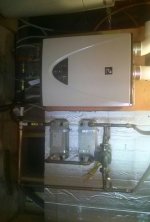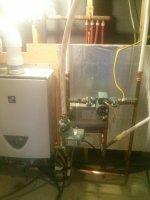Im not a pro plumber, but I have installed and used many different brands and types of tankless hot water heaters and combi boilers in my houses and family members houses, both condensing and non condensing. Rinnai and Takagi would be at the top of the list. I currently have a takagi t-h3-dv-n which runs about $1,000, plus hookup/flush valves kit, I swapped out a BOSCH tankless unit and instantly noticed a difference. These units are built for light commercial use and I use this single unit to heat my 2700 sqft house via in floor hydronic heating and provide DHW using separate loops and water to water heat exchangers. I have a thermostatic mixing valve to keep people for scalding them selves. The good thing about the condensing units, they uses 3" pvc for flue and intake, are 95% efficient, can be used for space heating up to 180 degrees f. They are modulating and only the set temperature exits the heater. We can run every hot water fixture in the house and the thing keeps cranking out the hot water.
As far as flushing them... I first ran a non condensing tankless for 7 years with hard water and never had an issue. I decided to flush it because I was told I should and after the flush I couldn't tell a difference in performance and the flushing fluid (vinegar) took on a shade of light green, but wasn't like sediment came out or anything. I do pre-filter all water in the house to keep the faucets from clogging up though.
Although, there are things to keep in mind, like "cold starts" and waiting longer for water at the tap. I wont buy another hot water tank, to me some things are just worth spending the extra dollar and this is one of them.


